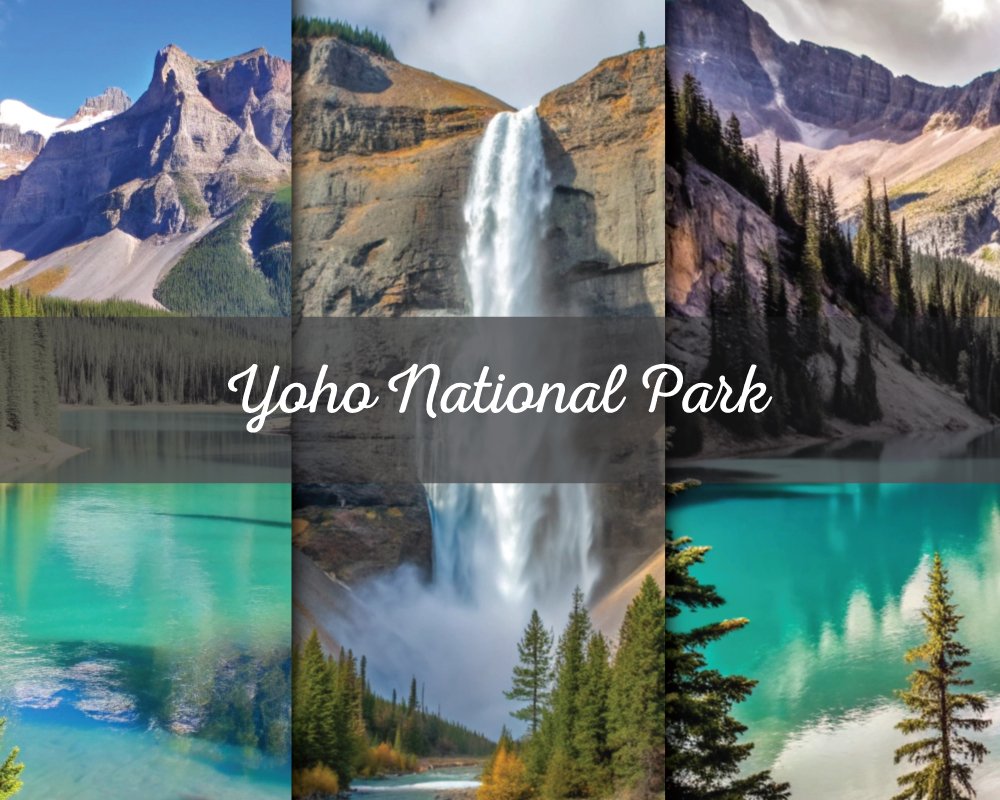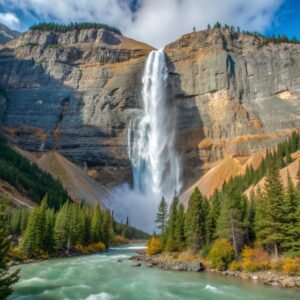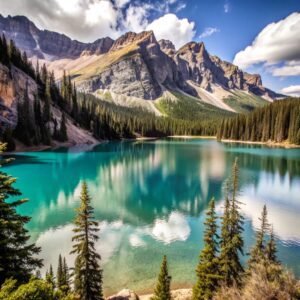
Table of Contents
Introduction:
Nestled in the heart of the Canadian Rockies in British Columbia, Yoho National Park beckons with its awe-inspiring landscapes, pristine alpine lakes, and towering peaks. Established in 1886, Yoho National Park is a UNESCO World Heritage Site renowned for its exceptional natural beauty and rich biodiversity. In this article, we’ll delve into the wonders that make Yoho National Park a must-visit destination for nature enthusiasts and adventurers alike.
Majestic Mountain Scenery:
Yoho National Park is a haven for those seeking breathtaking mountain scenery. The park is home to some of the Canadian Rockies’ most iconic peaks, including Mount Burgess, Mount Stephen, and the awe-inspiring Takakkaw Falls. The sheer grandeur of the towering mountains against the backdrop of vivid blue skies creates a postcard-perfect setting.
Takakkaw Falls:
One of the crown jewels of Yoho National Park, Takakkaw Falls is a spectacle of nature. Plummeting from a height of 302 meters, it is one of Canada’s highest waterfalls. The mist created by the cascading water creates rainbows on sunny days, adding to the enchantment of the site. A short hike takes visitors to the base, providing an up-close experience with this natural wonder.

Emerald Lake:
Known for its striking turquoise waters, Emerald Lake is a serene gem nestled within in it. Surrounded by dense forests and towering peaks, the lake offers opportunities for leisurely walks along its shores or more challenging hikes for the adventurous. Canoeing on the crystal-clear waters with the surrounding mountains reflected in the lake is a must-do activity.

Natural Bridges:
Yoho National Park is home to the enchanting Natural Bridge, a geological marvel formed by the erosive forces of the Kicking Horse River. A short hike leads to these natural rock formations, providing an ideal vantage point to marvel at the power of nature. The turquoise waters rushing beneath the natural bridge add to the allure of the site.
Burgess Shale Fossil Beds:
For those interested in paleontology, it is home to the Burgess Shale, a UNESCO World Heritage Site. The Burgess Shale contains some of the world’s most significant fossil deposits, offering a glimpse into ancient marine life over 500 million years ago. Guided hikes are available for those wanting to explore this paleontological treasure.
Accommodations:
Yoho National Park provides various accommodation options, ranging from charming lodges to campgrounds. The town of Field, situated within the park, offers a convenient base for exploring the surrounding natural wonders. Visitors can choose from a range of accommodations that cater to different preferences and budgets.

Yoho National Park Exploration Itinerary
Day 1: Arrival and Takakkaw Falls
- Morning:
- Arrive in Field and check into your accommodation.
- Quick breakfast in a local cafe.
- Late Morning:
- Head to Takakkaw Falls, a short drive from Field.
- Take a hike to the base of the falls for a spectacular view.
- Afternoon:
- Enjoy a picnic lunch near Takakkaw Falls.
- Visit the Natural Bridge for unique rock formations.
- Evening:
- Dinner in Field.
- Relax and plan for the next day’s adventure.
Day 2: Emerald Lake and Burgess Shale Hike
- Morning:
- Drive to Emerald Lake and explore its stunning shores.
- Optional: Rent a canoe for a peaceful paddle on the turquoise waters.
- Late Morning:
- Hike around Emerald Lake or choose a trail based on your preference.
- Afternoon:
- Picnic lunch by the lake.
- Afternoon guided hike to the Burgess Shale for a glimpse into ancient marine life.
- Evening:
- Dinner in Field.
- Relax and recount the day’s highlights.
Day 3: Lake O’Hara and Departure
- Morning:
- Drive along Yoho Valley Road to Lake O’Hara.
- Explore the stunning alpine scenery with a hike around the lake.
- Late Morning:
- Enjoy a picnic lunch in the picturesque Lake O’Hara area.
- Optional: Additional hikes based on your time and energy.
- Afternoon:
- Return to Field for final explorations or souvenir shopping.
- Depart from Field, cherishing the memories of Yoho National Park.
Conclusion:
Yoho National Park stands as a testament to the raw beauty and ecological diversity that Canada proudly preserves. Whether you’re captivated by the grandeur of mountain peaks, the tranquility of alpine lakes, or the fascinating history encapsulated in ancient fossils, Yoho National Park offers an unforgettable journey into the heart of the Canadian Rockies. Immerse yourself in the symphony of alpine splendor that defines Yoho National Park and create lasting memories amid nature’s masterpiece.
Support Us with Crypto!
If you enjoy our content and want to help keep this site running, you can support us with crypto.
Your support is appreciated!

Tron Network: USDT (TRC20)
Popular hotels in Yoho National Park
Also read our recent blog – Best Camping in Alberta – Overnight with Beach 2024
Where is Yoho National Park located?
Yoho National Park is located in the Canadian Rockies of British Columbia, Canada. It is situated along the western slope of the Continental Divide in the Yoho Valley.
What are the main attractions in it?
Yoho National Park boasts several key attractions, including Takakkaw Falls, Emerald Lake, Natural Bridge, Lake O’Hara, and the Burgess Shale fossil beds. Each offers unique natural beauty and recreational opportunities.
How do I get to Yoho National Park?
It is accessible by car. The town of Field, located within the park, serves as a base for visitors. Major nearby airports include Calgary International Airport and Kelowna International Airport.
Are there entrance fees for Yoho National Park?
Yes, there are entrance fees for Yoho National Park. Fees vary depending on the type of entry (day pass, annual pass, etc.). It’s advisable to check the official Parks Canada website for the latest fee information.
What outdoor activities can I enjoy in it?
It offers a range of outdoor activities, including hiking, canoeing, camping, wildlife viewing, and photography. Popular hiking trails include those leading to Takakkaw Falls, Lake O’Hara, and the Burgess Shale.
Can I camp in Yoho National Park?
Yes, camping is available in Yoho National Park. There are front-country campgrounds suitable for RVs and tents, as well as backcountry campsites for those seeking a more immersive wilderness experience. Reservations are recommended.
When is the best time to visit Yoho National Park?
The best time to visit Yoho National Park depends on personal preferences. Summer (June to August) offers milder weather, while spring (April to June) and fall (September to October) provide fewer crowds and beautiful landscapes. Winter (November to March) is less popular but offers a winter wonderland for those seeking a snowy adventure.
Can I see wildlife in Yoho National Park?
Yes, Yoho National Park is home to various wildlife species, including black bears, grizzly bears, elk, moose, and numerous bird species. Wildlife viewing is possible, but visitors should exercise caution and follow guidelines to ensure the safety of both visitors and animals.

Badhan is a passionate blogger, content writer, SEO expert, and graphic designer who helps brands grow through strategic content and creative design.